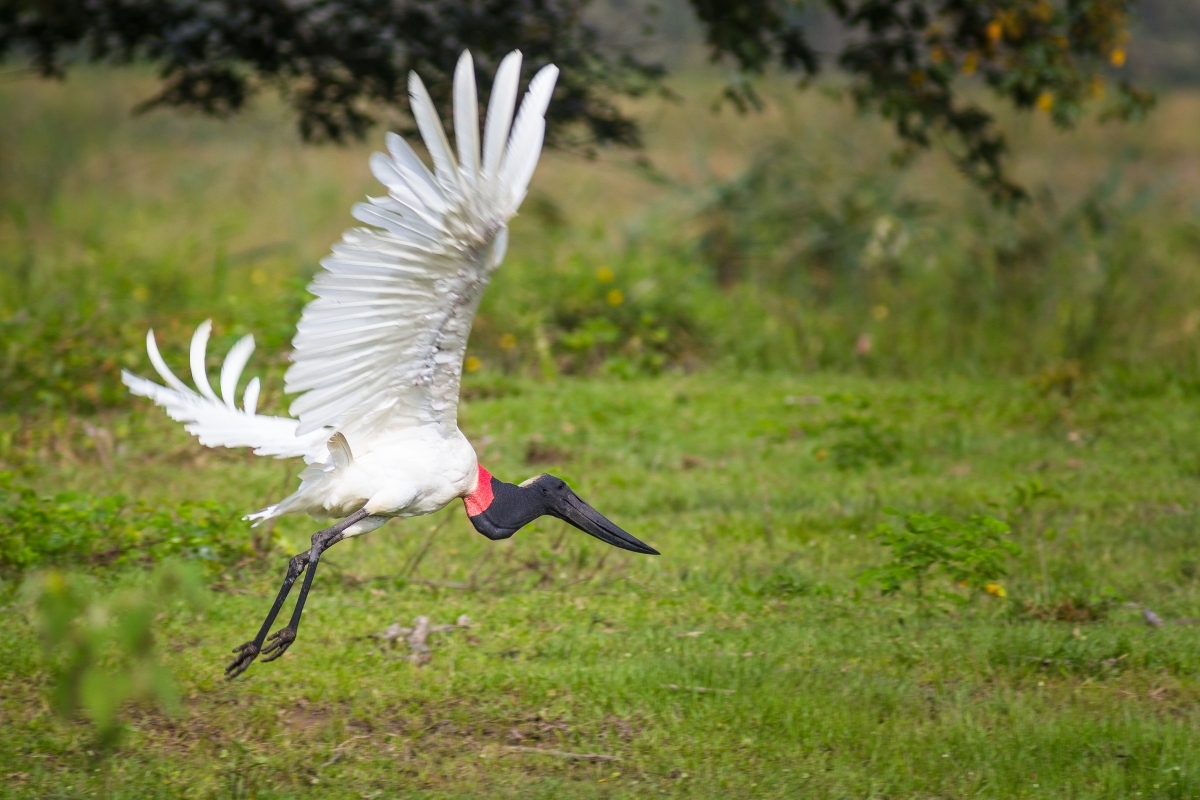The Jabiru, scientifically known as Jabiru mycteria, stands as one of the emblematic birds of the Americas, particularly in the wetlands and freshwater regions. Its impressive stature and unmistakable appearance make the Jabiru a notable representative of the Stork family.

Growing to a height of up to 5 feet with a wingspan reaching over 8 feet, the Jabiru is the tallest flying bird in South and Central America. Its mostly white plumage contrasts starkly with its dark, glossy black head and upper neck. Perhaps its most distinctive feature is the red ring encircling its lower neck, giving it a unique touch of color.
Primarily found across a swath of territory that spans from Mexico to Argentina, Jabirus thrive in a variety of wet habitats, including marshes, swamps, and the shores of lakes and rivers. These watery domains provide the ideal environment for them to hunt their preferred prey, which includes fish, amphibians, and even small mammals.
Their foraging technique is a sight to behold. With a deliberate and measured approach, they wade through shallow waters, using their long, sharp bills to capture and consume their prey. Often, they are seen standing motionless, patiently waiting for the right moment to strike.
The nesting behaviors of Jabirus are equally intriguing. They often build enormous nests, sometimes measuring over 6 feet in width, on tall trees or even on man-made structures. Both parents contribute to the construction, bringing in large sticks and branches to craft their sturdy abode. The female typically lays around 2 to 5 eggs, and both parents take turns incubating and later, feeding the chicks.
While the Jabiru does not face immediate extinction, habitat degradation, drainage of wetlands for agriculture, and disturbances during the nesting season are ongoing concerns. Conservation efforts are essential to ensure the preservation of their natural habitats and their continued existence in the wild.
In various cultures, the Jabiru holds symbolic value, often representing patience due to its hunting style and purity because of its white plumage. It has also become an icon for wetland conservation efforts.
Bird enthusiasts and researchers are particularly drawn to the Jabiru for its sheer size and captivating presence. By promoting the conservation of wetlands and raising awareness about the Jabiru, there’s hope that this magnificent bird will continue to grace the wetlands of the Americas for years to come.
In all, the Jabiru is a testament to nature’s grandeur. With its towering presence, unique appearance, and important role in its ecosystem, the Jabiru certainly earns its place as one of the avian giants of the New World.